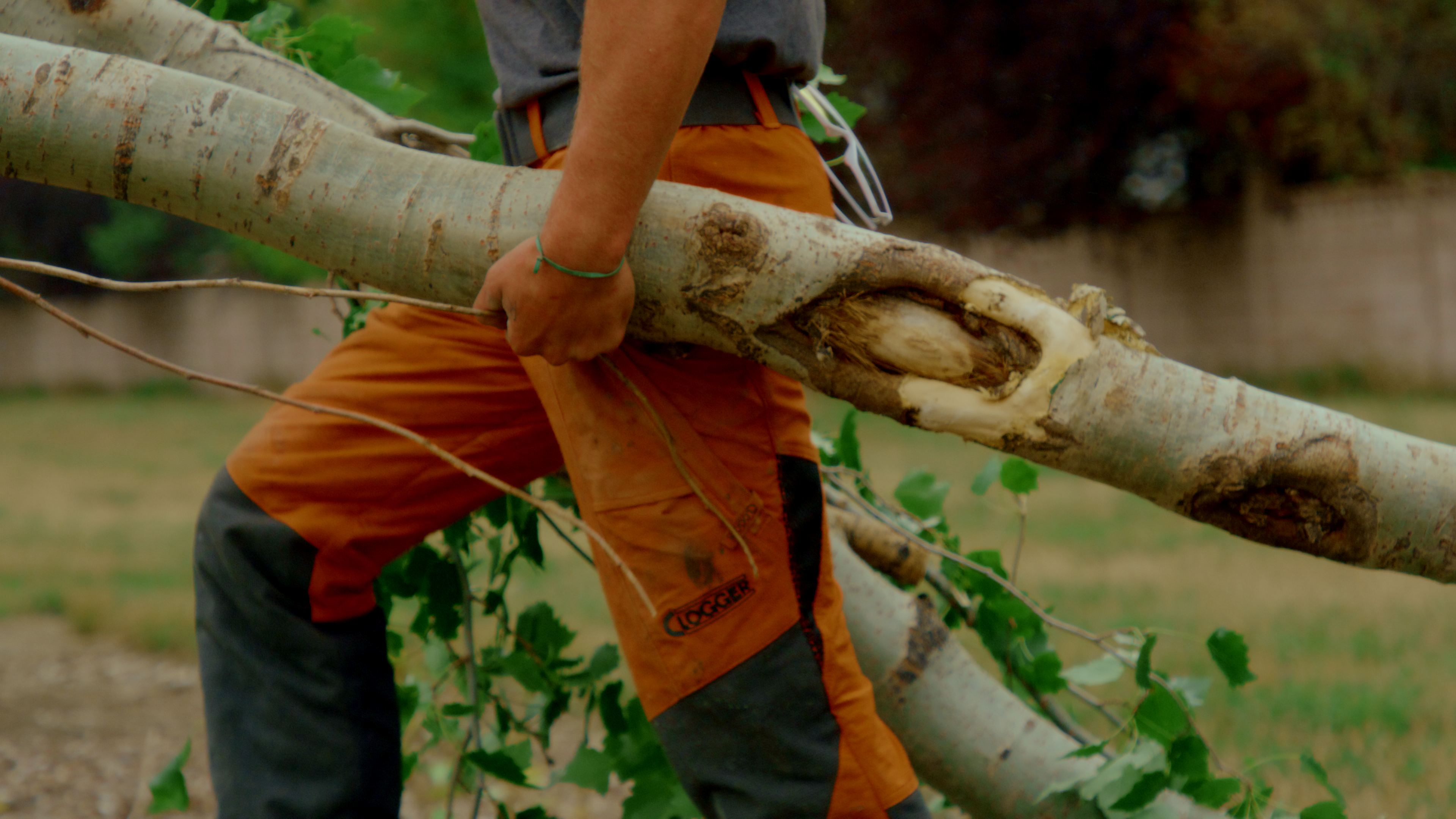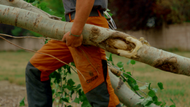In Canada, the length, intensity, and variability of wildfire seasons are increasing. Arborists working in or near fire-affected areas must choose PPE (personal protective equipment) that does more than just resist chainsaw cuts — it must also withstand smoke, radiant heat, embers, and harsh terrain.
This article outlines what Canadian arborists should look for in chainsaw PPE suited for wildland and fire-adjacent conditions, draws on Canadian wildfire data, and offers design guidance relevant to the Canadian context.

Canada’s Wildfire Context & Trends
-
Canada’s wildfire season typically spans early April through October, with variability by region. Government of Canada
-
Wildfire seasons are becoming longer, more frequent, and with more extreme fire behaviour. Government of Canada
-
The Canadian Wildland Fire Information System (CWFIS) monitors fire danger, behaviour, and hotspots across the country. Wildfire Info Canada
-
In Canada, wildland fire crews are often trained and mobilized under Canadian Interagency Forest Fire Centre (CIFFC) coordination. CCOHS+1
-
The National Guide for Wildland-Urban Interface Fires references NFPA 1977 as a standard for protective clothing used in wildland firefighting in Canada. Government of Canada Publications
These facts show that Canadian arborists operating near wildfires or in forested zones must think carefully about advanced PPE — not just basic cut gear.
What to Look for in Chainsaw PPE in Canada
1. Recognize the Standards and Gaps in Canadian Practice
-
Unlike some countries with localized wildfire clothing standards, Canada does not yet have a mandatory national wildland PPE standard equivalent to AS/NZS or EN specifically for chainsaw-use in fire zones.
-
However, NFPA 1977 is often referenced in Canadian wildfire and WUI guidance as a benchmark for protective clothing in wildland settings. Government of Canada Publications+1
-
Many Provincial fire agencies require that wildland PPE be flame-resistant, non-melt, and meet or exceed NFPA criteria in their procurement specifications.
So, in Canada, a solid strategy is: choose PPE that meets or exceeds NFPA 1977 (or equivalent), plus supplementary cut protection and ensure it's usable under Canadian field conditions.
2. Flame Resistance, Non-Melting Materials & Thermal Protection
In wildland fire zones, PPE will face radiant heat, ember showers, and brief flame contact. The material must:
-
Be inherently flame-resistant (e.g. aramid fibres, FR blends)
-
Not melt, drip, or fuel further heat transfer
-
Provide thermal protection so that heat exposure doesn’t injure the skin beneath
Because Canadian WUI / wildfire guides often cite NFPA 1977 as a “go-to” reference, aligning your PPE with those characteristics makes it acceptable for many procurement or contracting setups. Government of Canada Publications
3. Cut / Mechanical Protection for Chainsaw Use
Arborists must still guard against one of the most immediate hazards: the chainsaw itself. Key features:
-
Layers or internal inserts that stop or slow a running chain
-
Cut-block fabrics (or equivalents) integrated beneath the flame shell
-
Designs that prevent the protective layers from shifting during motion
-
Testing to a recognized cut-performance standard (even if borrowed from EN or ASTM frameworks)
4. Smoke, Heat Stress & Breathability
Canadian forest zones may also bring dense smoke and high temperatures during active fires.
Look for PPE that:
-
Has ventilation or breathable zones (while maintaining flame integrity)
-
Uses moisture-wicking liners
-
Is relatively light without compromising protection
-
Has ergonomic patterns that reduce internal heat build-up
5. Full Coverage, Fit, and Secure Mounting
Proper coverage and stable fit are vital:
-
Full leg coverage (thigh down to boot)
-
Wrap or side protection, not just front panels
-
Secure belts, quick-release clips, adjustable straps
-
Snag-resistant outer fabrics (brush, branches, stump sprouts)
-
Reinforced zones in high-wear areas
6. Labeling, Traceability & Certification Documentation
Before trusting gear:
-
Look for documentation or labeling showing flame resistance level and cut protection claims
-
Manufacturer, lot/batch number, date of manufacture
-
If possible, test data or third-party certification
-
Ensure it can be audited or verified in procurement or safety review
Contextual Ensemble: What Else You Need
Chainsaw chaps or pants are essential — but only part of the full protection ensemble. Arborists working near fire or in smoke zones should also include:
-
Helmet with eye/face shield and neck protection
-
Flame-resistant upper garments (jackets/shirts)
-
Leather gloves with abrasion + flame resistance
-
Sturdy boots appropriate for forestry and fire proximity
-
Respiratory protection (respirators, masks) for smoke, particulates, gases
-
Hydration systems / gear belts to carry first aid, radio, communication tools
Each component interacts — a failure in one can put pressure on others.
Why This Matters: Data & Fire Trends in Canada
-
Canada’s wildland fire seasons are expanding and intensifying, putting more workers near active fire zones for longer periods. Government of Canada+1
-
Wildfire smoke is a well-documented occupational hazard. The Canadian Centre for Occupational Health & Safety (CCOHS) alerts that smoke contains fine particulates, carbon monoxide, nitrogen oxides, volatile organic compounds, etc. CCOHS
-
The National Guide for Wildland-Urban Interface Fires (Canada) cites NFPA 1977 for protective clothing in wildland fire operations. Government of Canada Publications
These trends underscore that arborists in Canadian forest zones must adopt PPE that handles dual threats: the chainsaw + fire environment.


